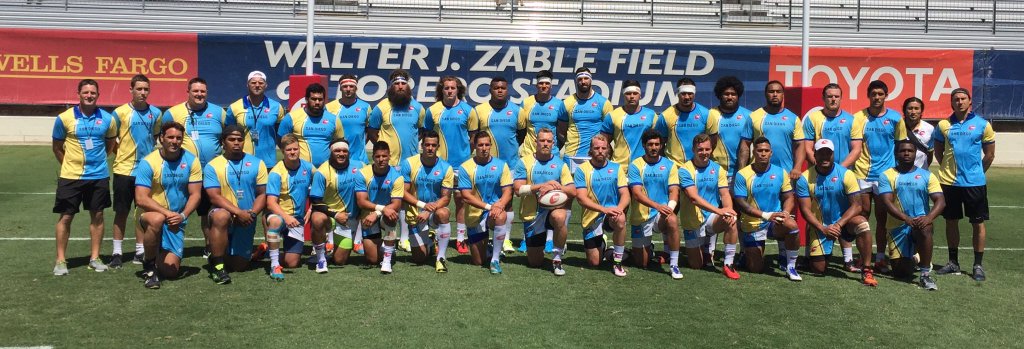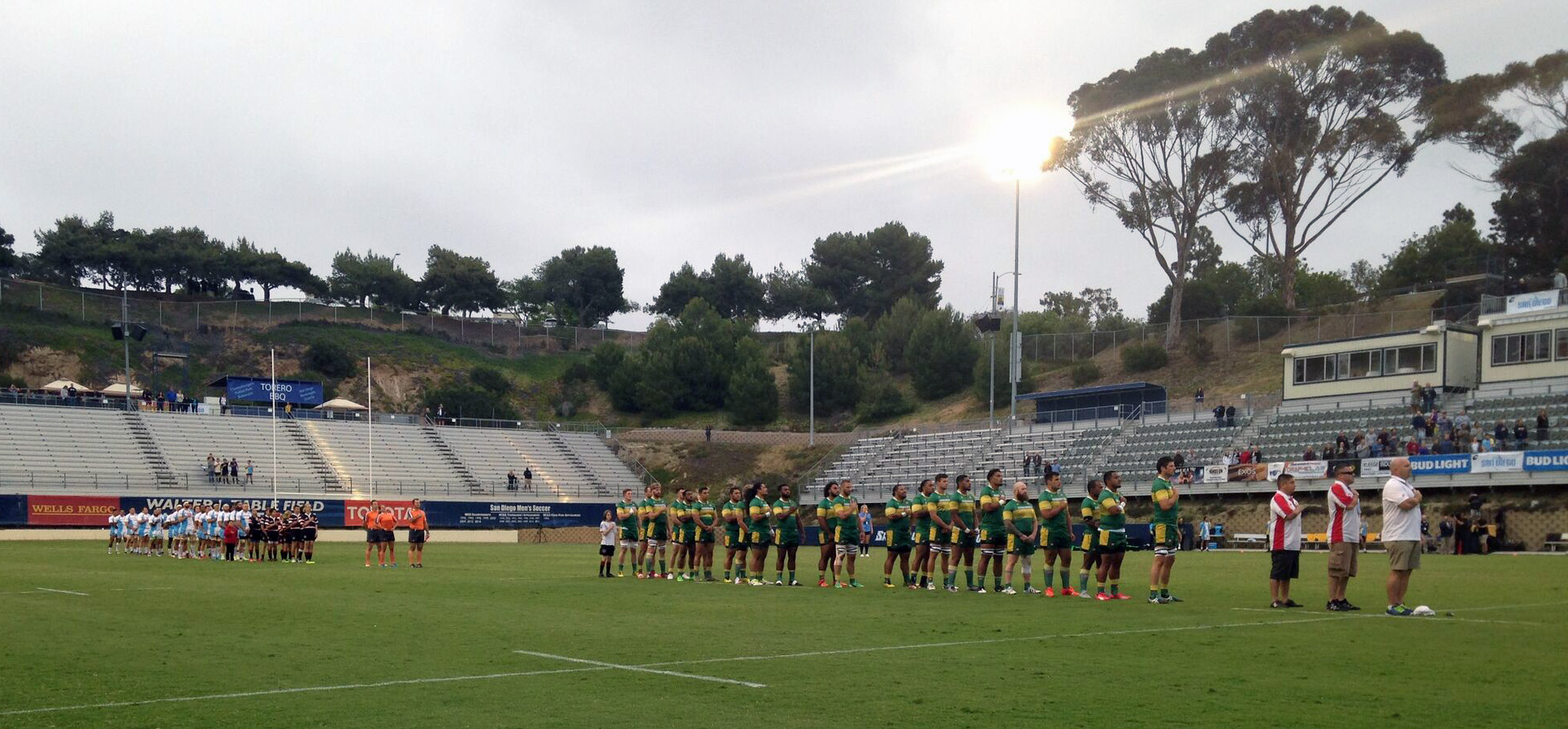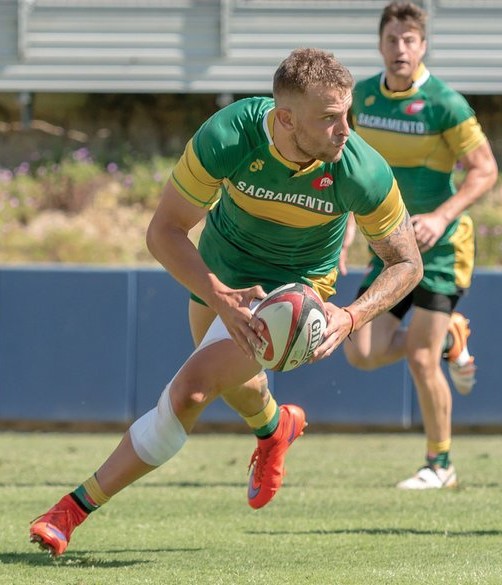

SAN DIEGO, CA – On a freezing cold night (at least by San Diegan standards), this past Saturday, Pro Rugby San Diego secured its fourth win of the season with a breakout 27-point second-half performance, defeating northern California rival Sacramento. Sacramento, having lost four games on the drop prior to their trip to Torero Stadium, succumbed to yet another poor second-half performance in falling to their fifth straight defeat of the season. The match definitely was not the most aesthetically pleasing fixture of the season, but San Diego’s moments of attacking brilliance and Sacramento’s resilience made it entertaining nonetheless.
Now that two days have elapsed since the match, I’ve had time to reflect on both teams’ performances and Time to speculate on how each team can move on in the rest of the season. Here are my Top 4 Takeaways from San Diego’s 44-23 defeat of Sacramento:
1) San Diego is just a step away from being the league’s top side. Tim Stanfill and Taku Ngwenya both had stormers of a match last Saturday, scoring three tries between the two of them and adding a blistering pace on the outside to a team that’s already shown speed through the likes of Mikey Te’o, Joe Taufete’e and several others. San Diego was missing something on Saturday, though, that made them look like a good team rather than a great team: support. Several times during their match against Sacramento, San Diego runners found themselves going into contact with no support in a 3-5 m radius, forcing the ball runner to try and keep his feet after contact, often times the doing of which slowed down the speed of San Diego’s attack. In all of their games this season, San Diego has thrived when they are able to string together three or more phases, phases that allow them to draw opposition defenders to quick, repeated breakdowns before swing the ball wide towards open space and a stretched defensive line. By providing a player or two in support to the ball carrier, San Diego will give themselves the opportunity to offload the ball in a style much akin to southern hemisphere rugby or the ability to quickly secure the breakdown with supporting players and push the pace of the attack to favor their outstanding speed. If San Diego are able to provide said support, I think their attack will be able to overpower any side, even the impressive defensive stature of the purple men from Denver.

2) Sacramento HAS to stop the unprecedented flow of errors. Although they were beaten by 21 points, Sacramento had several opportunities to make the score line reflect the actual nature of the match. San Diego was easily able to get the upper hand on the match thanks to a myriad of errors of inexperience, namely knock-ons, errors that, if eliminated, would have easily put Sacramento in contention for a victory. Nemia Qora and Langilangi Haupeakui, although not the only culprits, dropped the ball on two of Sacramento’s biggest try-scoring opportunities, both times of which the ball was knocked forward in unforgivingly bad fashion. Once Sacramento figures out its ballhandling problem, the wealth of power players in Langilangi, Sione Sina, Sione Latu, Qora, and more will no doubt turn Sacramento into a formidable side where the other spot closer to the top of the table.

3) Mirco Bergamasco needs more of a central role in Sacramento’s game plan. For the first time this season Bergamasco started at fly half after several weeks playing his more traditional role in the center, and I believe his increased involvement in control of Sacramento’s midfield served the boys in green and gold for the better. The Italian international has not seen much of the ball this season playing in the center, and although he did not have much time on the ball last Saturday, his ability to control how and where Sacramento attacked made the visitors push forward with a higher level of efficiency and precision. Yes, at times Bergamasco chose to take the ball himself instead of passing the ball wide, but that was largely a result of San Diego’s high-pressure defense that effectively cut off Bergamasco and inside-center Joeli Tikoisuva from wider attacking options in outside-center Nemia Qova, winger Sione Latu, and fullback Garrett Brewer. With all of his experience in domestic and international competition, Sacramento can benefit exponentially from having Bergamasco controlling their attacking output.
4) San Diego needs to continue working out their set piece kinks. San Diego plays an open, entertaining brand of rugby that has been proven effective in four of their five matches this season. But, San Diego will continue to run into trouble against top level sides like Denver and Ohio if they are not able to figure out how to maintain possession at the line out. Just as it was frustrating to watch Sacramento drop the ball on scoring opportunities, so too was it frustrating to watch San Diego lose line outs in critical areas of the pitch that either nullified a scoring opportunity or put them under pressure in their own half. Towards the end of the first half San Diego had to lie and outs that could have extended the home side’s lead to something much more comfortable than a single point, but Sacramento was able to steal possession and kick the pressure away. Then, towards the end of the match, San Diego had two line outs over the space of 10 minutes stolen within their own 22 that allowed Sacramento, although momentarily, to get back into the match. Whether it’s an over-complication of line out plays or just inexperience as a unit, San Diego will need to fix this problem before moving forward.
Please feel free to comment below, look for and “Like” our Facebook Rugby Wrap Up Page and follow us on Twitter@: RugbyWrapUp, @MeetTheMatts, Ronan Nelson, Junoir Blaber, Crawford Miller, Luke Bienstock, James Harrington and Declan Yeats.

